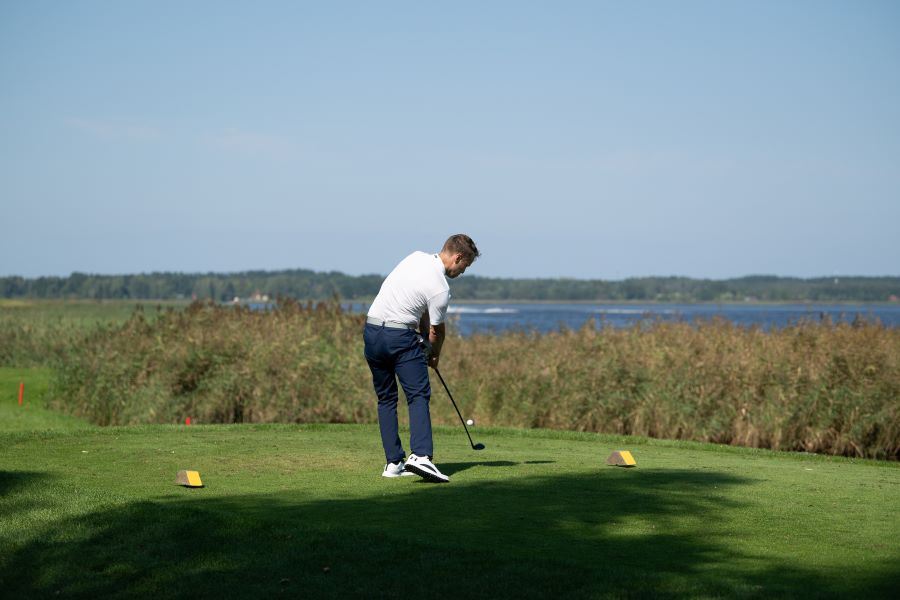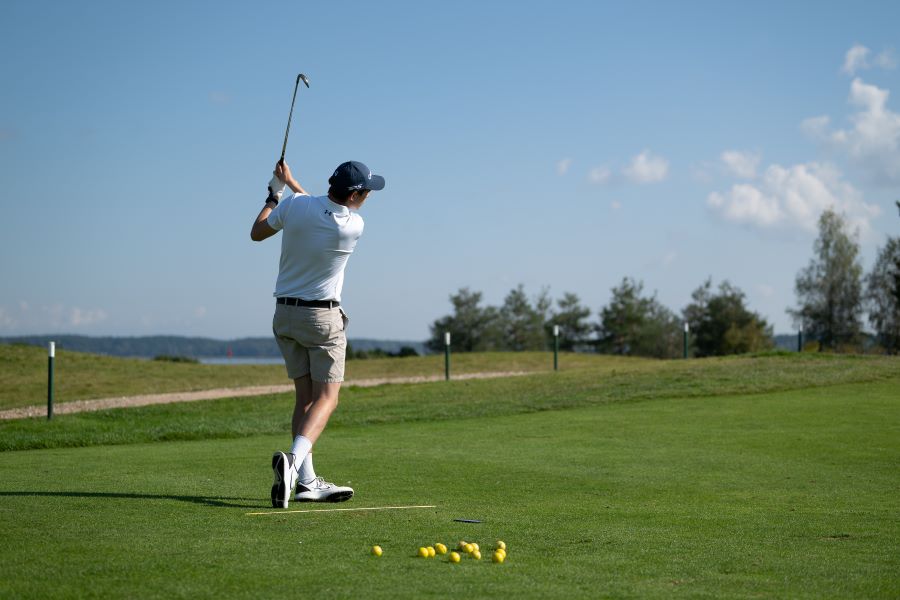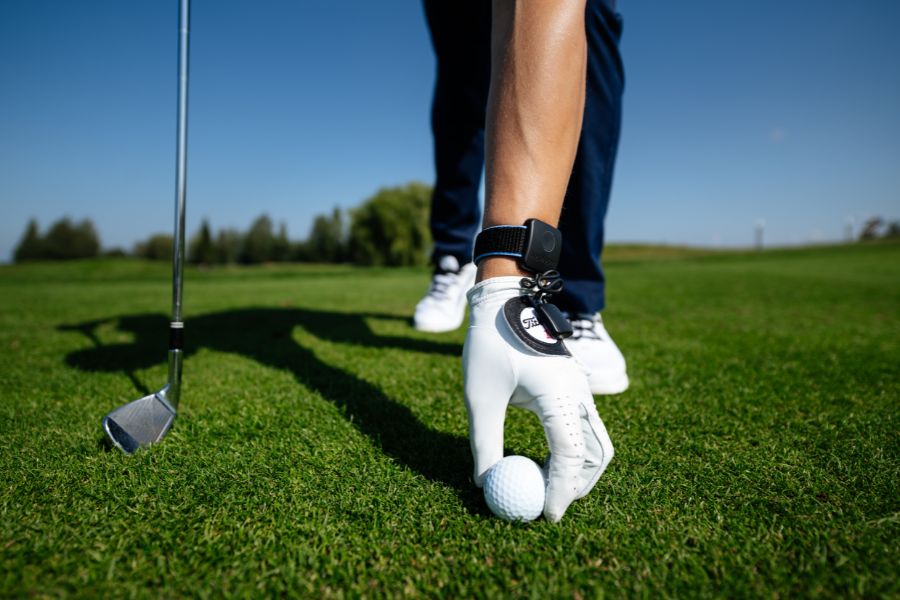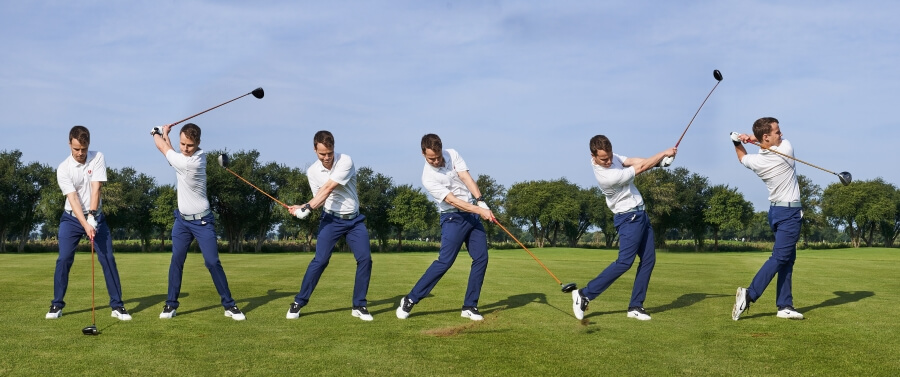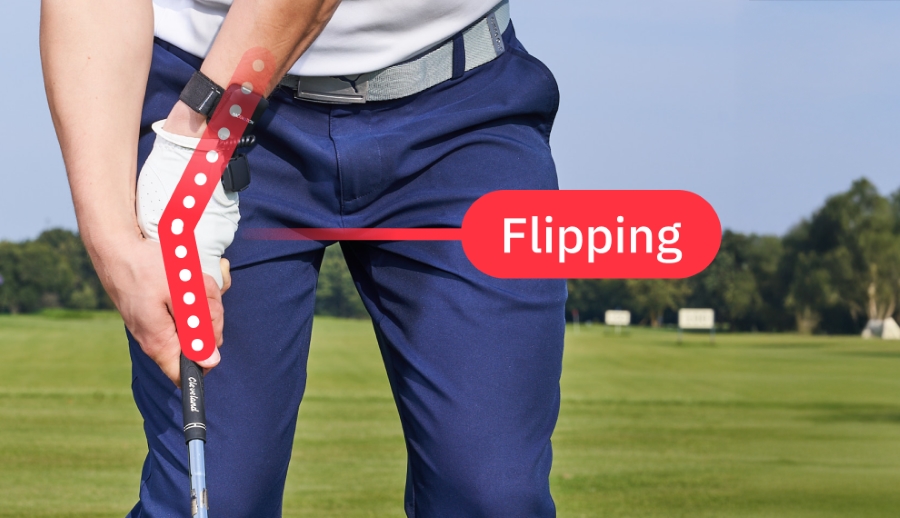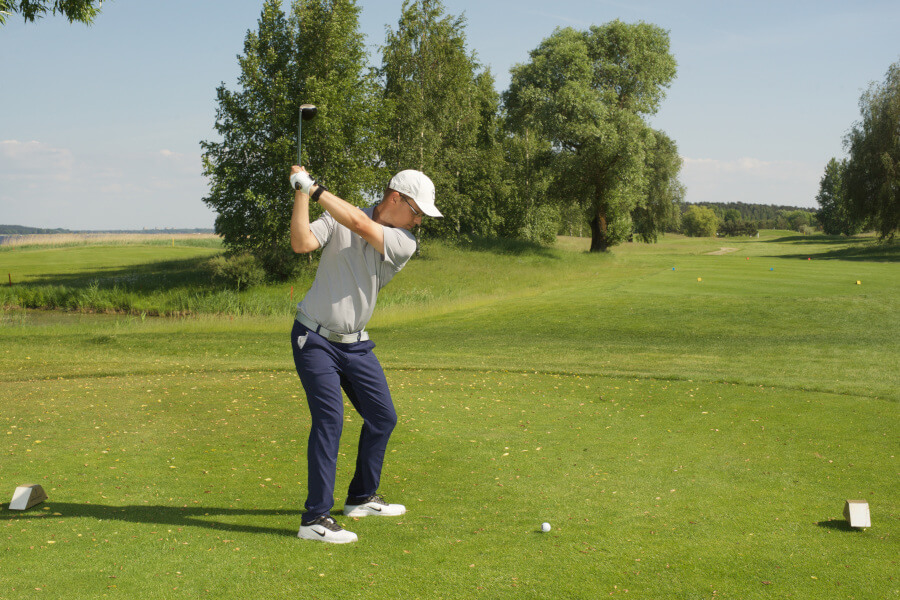4 Steps to Stop Coming Over the Top in Your Golf Swing (Complete Guide with Drills)
Coming over the top is one of the most common swing faults in golf. But here’s the truth: fixing it isn’t about rerouting your arms in the downswing.
It starts at the top.
When your lead wrist is extended and your body is out of position, you’re forced into a swing path that comes steep and across.
The good news? You can fix it, and you don’t need to rebuild your entire swing to do it.
Stop Coming Over the Top (Key Takeaways)
Here are the most important things to remember about coming over the top, even if you don’t have time to head to the range right now and work on it.
- Coming over the top starts with wrist extension at the top, not the downswing.
- Excess extension makes it harder to shallow the club or square the face.
- The Motorcycle Drill (with HackMotion) helps you train wrist flexion and fix your path.
- Shortening your backswing improves rotation and sequencing.
- Use HackMotion to measure wrist extension and track improvements in real time.
Contents
What Causes You to Come Over the Top?
Before you dive into the steps to stop coming over the top in your golf swing, here are the most important causes to keep in mind.
- Too much wrist extension at the top of the backswing.
- Downswing led by arms, not hips and legs.
- Poor weight transfer (stuck on the trail leg).
- Lack of rotation through impact.
- Early release or casting the club.
These all cause the club to come from the outside and across the ball, producing slices, pulls, or that dreaded pull-slice.
4 Steps to Fix an Over the Top Golf Swing
The cause of the over the top swing is improper wrist position and or poor body rotation.
However, certain adjustments to your setup can help you straighten this out and start attacking the ball from the correct angle. Start with your grip strength and then work your way through the list.
Step 1: Train the Wrist First with the Motorcycle Drill
The most important move you can make when fixing an overly aggressive golf swing is to get the position correct at the top of the backswing and start to lose some of that lead wrist extension.
When you move your lead wrist into flexion (by twisting it like a motorcycle throttle), you close the clubface and put the club in position to swing from the inside.
HackMotion Motorcycle Drill – Step by Step:
- Normal Setup: Start with slight extension in your lead wrist.
- Swing to the Top: Pause and check your wrist angle.
- Motorcycle Motion: As you transition, twist the lead wrist like turning a motorcycle throttle “off.” This adds flexion.
- Measure with HackMotion: See if your wrist extension drops into flexion.
- Adjust Ball Flight: Too much flexion may hook; too little keeps the face open.
This drill is even more effective with real-time feedback from HackMotion, allowing you to monitor wrist angles and fine-tune your feel.
Motorcycle Drill – Master Wrist Flexion in the Downswing
Focus on continuously adding flexion until the club reaches parallel, then smoothly complete your swing.
Step 2: Fix Your Setup (Grip + Posture + Shorter Backswing)
To stay on plane, you need a setup that lets you rotate freely and control the club.
- Neutral Grip: Avoid gripping too strong or weak. Use light grip pressure to reduce tension.
- Upright Posture: Imagine setting up to jump into a pool, spine straight, knees slightly flexed.
- ¾ Backswing: Shorter swings help you rotate better and avoid lifting the arms steeply.
HackMotion can help you monitor wrist extension at the top of this ¾ position, ensuring you’re not adding excess cup or bend.
Step 3: Improve Transition with Better Weight Shift
A proper downswing starts from the ground up, not from the shoulders. If you are using your hands and wrists to take the club back and now rotating your body and shifting your weight it could be causing you to swing over the top.
To fix this:
- Shift pressure into your lead foot before the arms move.
- This creates lag and keeps your upper body from dominating the downswing.
Without this move, you’re left casting the club from the top and pulling across it. To practice, you can use the HackMotion casting drill that will ensure you maintain your lead wrist angle on the downswing and not lead with the arms from the top.
Step 4: Keep the Shoulders Turning Through Impact
Stopping your shoulders in the downswing is a power and accuracy killer.
- Keep rotating through the ball.
- This helps square the face and keeps your swing on plane.
- It also prevents the hands from flipping or stalling.
Shoulder rotation, paired with good wrist angles, creates compression and consistency.
Additional Drills to Help You Stop Coming Over the Top
These drills reinforce better movement patterns and help you commit the right feels to muscle memory.
Tees Under Arms Drill
The Tees Under Arms Drill prevents lifting the arms away from the body.
The connection you create when your arms stay more attached to the body for both the backswing and the downswing.
- Video Timestamp: 8:40 – 12:02
Tees Under the Arms Drill – Step by Step:
- Tuck a tee (or small object) under each armpit and keep them there through the backswing.
- Avoid letting the tees drop as you swing back. Keeping them in place maintains a connected, on-plane move.
- Let the arms fall: In the downswing, let the arms fall and rotate with the body instead of lifting or chopping down.
- Practice with and without golf balls: At first, practice the feel without hitting golf shots. When you get the hang of it, try hitting some half- and then full-swing shots with the tees in place.
Two Headcover Drill
The Two Headcover Drill can help get the club on the proper neutral path. The great thing about this drill is that you likely have all the equipment you need to do it, and you can reverse it to work on out-to-in or in-to-out issues.
If you have your HackMotion, wearing it while you work on the Two Headcover Drill can lead to quicker results and better accuracy.
- Video Timestamp: 4:06
Two Headcover Drill – Step by Step:
- Setup: Place two headcovers on the ground. One goes just behind the ball on the “outside,” and the second goes just inside the ball, closer to your feet. Put on your HackMotion sensor to monitor wrist angles.
- Address the ball with a square clubface.
- Swing back while keeping your lead wrist from cupping or bowing excessively (check HackMotion feedback).
- On the downswing, deliver the club from the inside path, avoiding both headcovers.
- If you clip the outside headcover, you’ve swung out-to-in; if you clip the inside one, you’ve swung too far from the inside.
- Focus on stable wrist angles through impact for a square face.
Final Thoughts
If you’re trying to fix your over-the-top swing by “rerouting” your arms, you’re missing the real fix.
It’s about your wrist angles and setup, not just your downswing path. If you can get the wrist angles correct in the backswing the rest of the work is done for you.
Start by training wrist flexion with the Motorcycle Drill and let HackMotion guide your progress. From there, shorten your backswing, rotate through the shot, and shift your weight properly.
With the right sequence and measurable feedback from HackMotion, you can build a swing that’s powerful, consistent, and on plane, without coming over the top.






